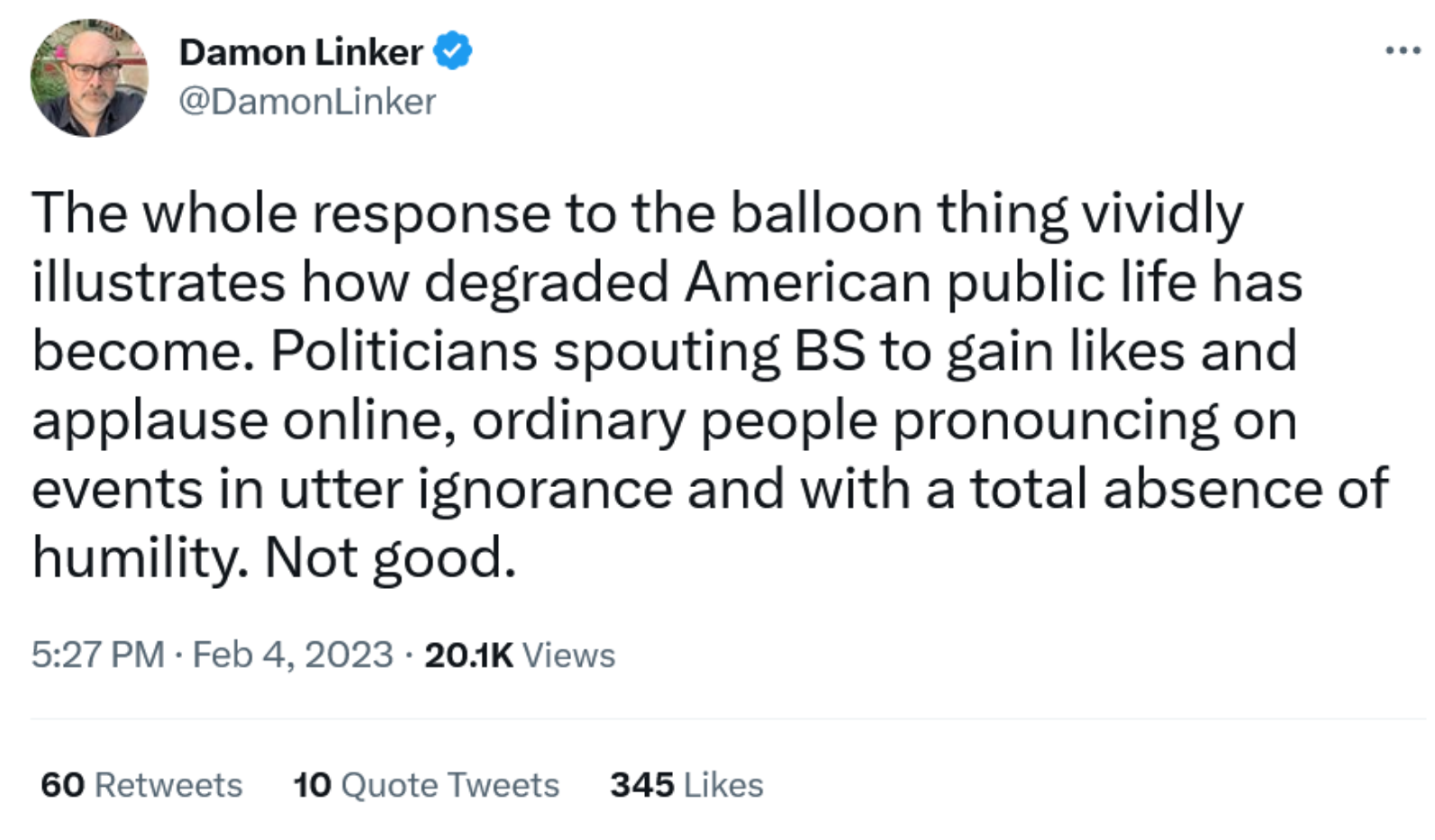The Daily Escape:

Sea smoke at Portland Head Light – February 2023 photo by Rick Berk Photography
(The Wrongologist is taking a few days off. The next column will appear on Tuesday, 2/14. Enjoy your nachos and jalapeno dip on Sunday.)
Wrongo and Ms. Right watched the State of the Union (SOTU) extravaganza. You have already read many insightful observations, so Wrongo’s facing the daunting task to come up with something original for you. Let’s start with some data. CNN’s flash poll of SOTU viewers found that 72% had a positive reaction to Biden’s speech, while:
“71% said Biden’s policies will move the country in right direction — up 19 percentage points from before his speech.”
That’s a win. Politico reported that:
“…the White House is ecstatic that the GOP’s ‘boos, taunts, groans, and sarcastic chortles’ helped Biden paint them as ‘unreasonable and chaotic.’”
It was the most confrontational SOTU address ever, but Biden seemed up to handling the catcalls. Like CNN, most pundits gave Biden good marks for the speech. It ran from “best Biden speech ever!” to “Biden Kills It” to Kate Riga of Talking Points Memo tweeting:

Everyone’s talking about how House Republicans underestimated old man Biden. His speech was an early look at his 2024 general election strategy. Biden is a career politician. Maybe he learned somewhere along his way to the Oval Office that you are only as unpopular as your enemies are popular. In that case, he’s a winner.
Based on Sarah Huckabee Sanders’ GOP rebuttal, Trumpists and their ilk plan to treat 2024 as another braying appeal to their grievance-filled base. They’re adding a rich creamy layer of culture war to help spin up their base, along with their evergreen awfulizing about the national deficit. From JV Last:
“Where Biden spent the majority of his speech talking about steel workers, bridge projects, insulin prices, and junk fees, Sanders insisted that Biden has surrendered to “a woke mob that can’t even tell you what a woman is.” And that “his administration has been completely hijacked by the radical left.”
OTOH, Biden’s 2024 strategy won’t be a re-run. It’s different and new. As Eugene Robinson says in the WaPo:
“The call to action during President Biden’s State of the Union address on Tuesday — “Let’s finish the job” — would never be mistaken for soaring poetry.”
That also resonated with Jon Last, who agrees that “Finish the Job” will be the campaign’s guiding theme. Here are the implied pillars of Biden 2024:
- The economy has to keep growing and it must help everyone.
- The deficit must be cut to the extent possible over the next six years.
- Biden’s great accomplishments were achieved with bipartisan help of centrist Republicans.
- The government needs to keep funneling money to small towns and rural areas, something that he started with the infrastructure bill.
- The risky ideas of the MAGA Republicans who plan to torpedo Social Security and Medicare will be front and center in the campaign.
Instead of the Republicans’ embrace of the culture wars, here’s what Biden had to say: (emphasis by Wrongo)
“My economic plan is about investing in places and people that have been forgotten. Amid the economic upheaval of the past four decades too many people have been left behind or treated like they’re invisible.
Maybe that’s you watching at home.
You remember the jobs that went away. And you wonder whether a path even exists anymore for you and your children to get ahead without moving away. I get it.
That’s why we’re building an economy where no one is left behind. Jobs are coming back; pride is coming back because of the choices we made in the last two years.
This is a blue-collar blueprint to rebuild America and make a real difference in your lives.”
A “Blue-Collar Blueprint” is a smart way to brand your 2024 agenda, instead of some focus-group tested acronym or clever name. Sometimes it just makes sense to say what you mean. As Ron Brownstein wrote in The Atlantic: (brackets by Wrongo)
“He [Biden] repeatedly noted how many of the jobs created by his economic agenda are not expected to require a four-year college degree.”
Jon Last contrasts Biden’s strategy with the GOP strategy, which he thinks is doomed to failure:
“Republicans believe they can increase the number of votes from one group of Americans (their base) by….attacking another group (the coastal elites). Further, Republicans believe that the number of votes they will win through this use of negative polarization will be greater than the number of votes they might otherwise gain by trying to empathize with and persuade the out-group.”
That’s a re-run of Trump 2020.
Biden isn’t going to play defense in 2024. The GOP’s core strategy is always to sway working-class voters and use that political base to implement policies that enrich corporations and the wealthy at the expense of their base.
If Biden can find a way to drive a wedge into that Republican coalition, and peel off 3%-5% of their working-class supporters, it would translate into a big victory in 2024.




















